I have recently renewed my love for Yakitori. Not that I wasn’t always a fan of these skewered delicacies, but I just hadn’t had any outstanding ones–until my recent trip to New York, where I found the most amazing yakitori this side of the Pacific Ocean. The word yakitori literally means “grilled chicken”, but also refers to this style of dish–bite sized morsels of chicken and vegetables skewered on bamboo sticks and grilled over an open flame. There are many variations of yakitori, usually cooked to order and served a few skewers at a time.
Typical Yakitori menu:
•Negima: classic yakitori, made with alternating pieces of chicken thigh and short spears of scallion, brushed with a teriyaki style sauce as it grills.
•Tsukune: meatballs make of minced chicken, vegetables and spices, usually skewered 3 to a stick.
•Kawa: only the skin of the chicken, grilled to be crispy on the outside–not as fatty as you might think, if done right.
•Tebasaki: chicken wings, splayed and skewered with bone in, usually 2 to a stick and eaten with a dusting of salt.
•Reba: chicken liver, loved for their firm texture as you bite into it, as well as the taste.
•Nankotsu: mostly cartilage taken from the breast bone, again prized for its crunchy texture.
•Sunagimo: chicken gizzards, popular for its grainy taste and healthy benefits.
•Sasami: chicken breast; soft and tender, this part is less fatty and regarded for its high quality–often served with wasabi.
You can see how almost every part of the chicken is used, and there are more organs that I haven’t listed here. I’m a fan of yakitori, but not a fanatic enough to eat weirdness. Any yakitori restaurant will also serve a variety of non-chicken skewers like pork, vegetables like shiitake mushrooms and asparagus, and their own creations like bacon wrapped whatever on skewers–you can’t go wrong with bacon!
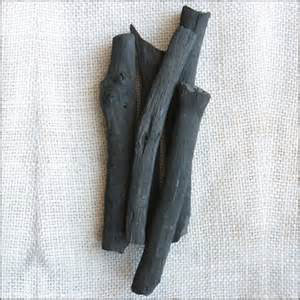
There’s some background that you might appreciate about yakitori. Any decent yakitori restaurant will use a particular type of charcoal called Binchotan, an extremely hard, slow burning white charcoal that doesn’t release smoke or any unpleasant odors like common black charcoal, making it a favorite of discriminating chefs. Its hardness even makes it ring with a metallic sound when struck. Binchotan originated from Japan and dates back to the Edo Period of the 1600’s.
The types of seasoning or sauce used to flavor each kind of yakitori also varies with the type of meat or chicken part or vegetable being used. You are usually given a choice of condiment at the table, including the house sauce, ground red chili pepper called shichimi, or plain salt. Other seasonings like miso paste or ponzu or wasabi are usually applied before it reaches your table.
One restaurant I went to many years ago in Tokyo always had a reservation list at least 2 weeks in advance. And it was because there were only about 12 seats in front of the counter, where a very picky chef prepared and grilled every skewer by himself, one by one in front of every customer. He would then place a pinch of the specific condiment that he wanted you to use next to it on the dish. This was his way of urging everyone to eat his yakitori exactly the way he thought it best, because he wanted you to have it taste the way he intended, not overly seasoned or altered. I don’t think anyone objected.
If you’ve never had yakitori, I would suggest you try it–Zojirushi has a recipe for a miso based chicken one that you can easily make at home with a roaster. Find the recipe here.
Yakitori images courtesy of Shelley Opunui and Restaurant Totto, NYC.
Binchotan courtesy bigelowchemists.com
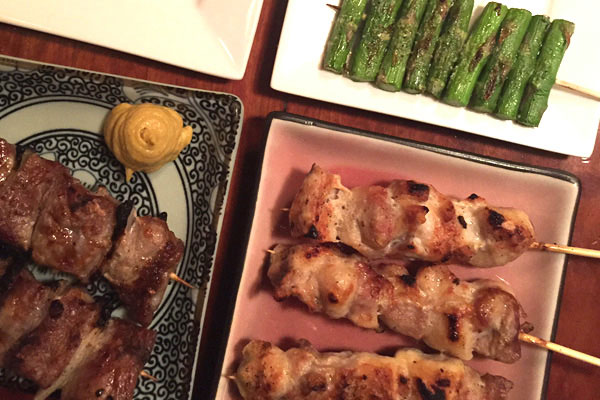
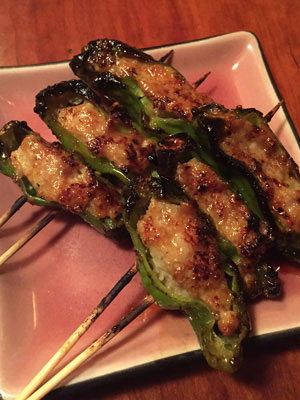
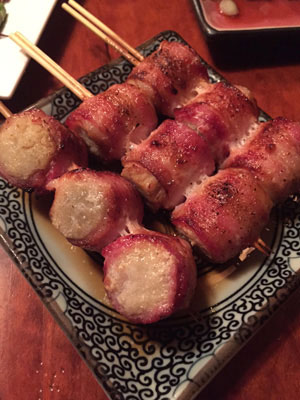
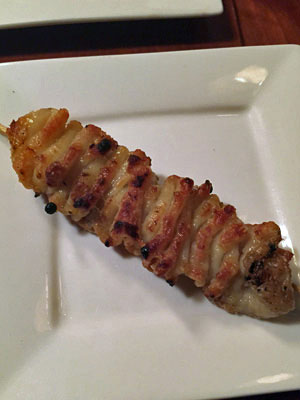
Leave a Reply